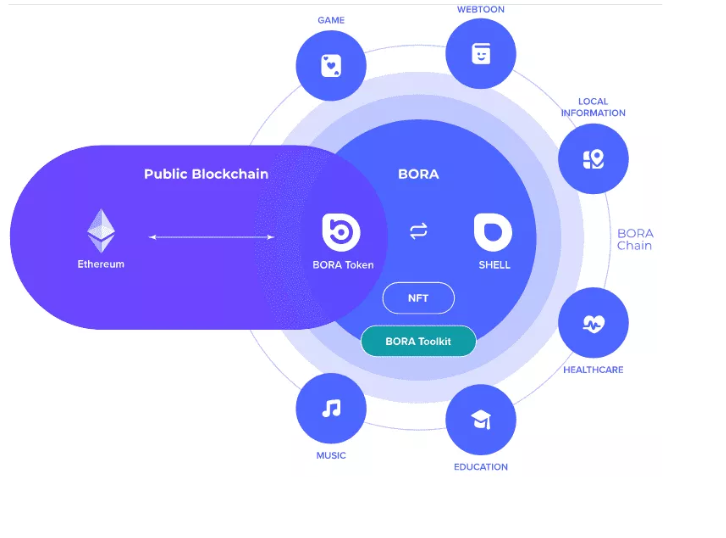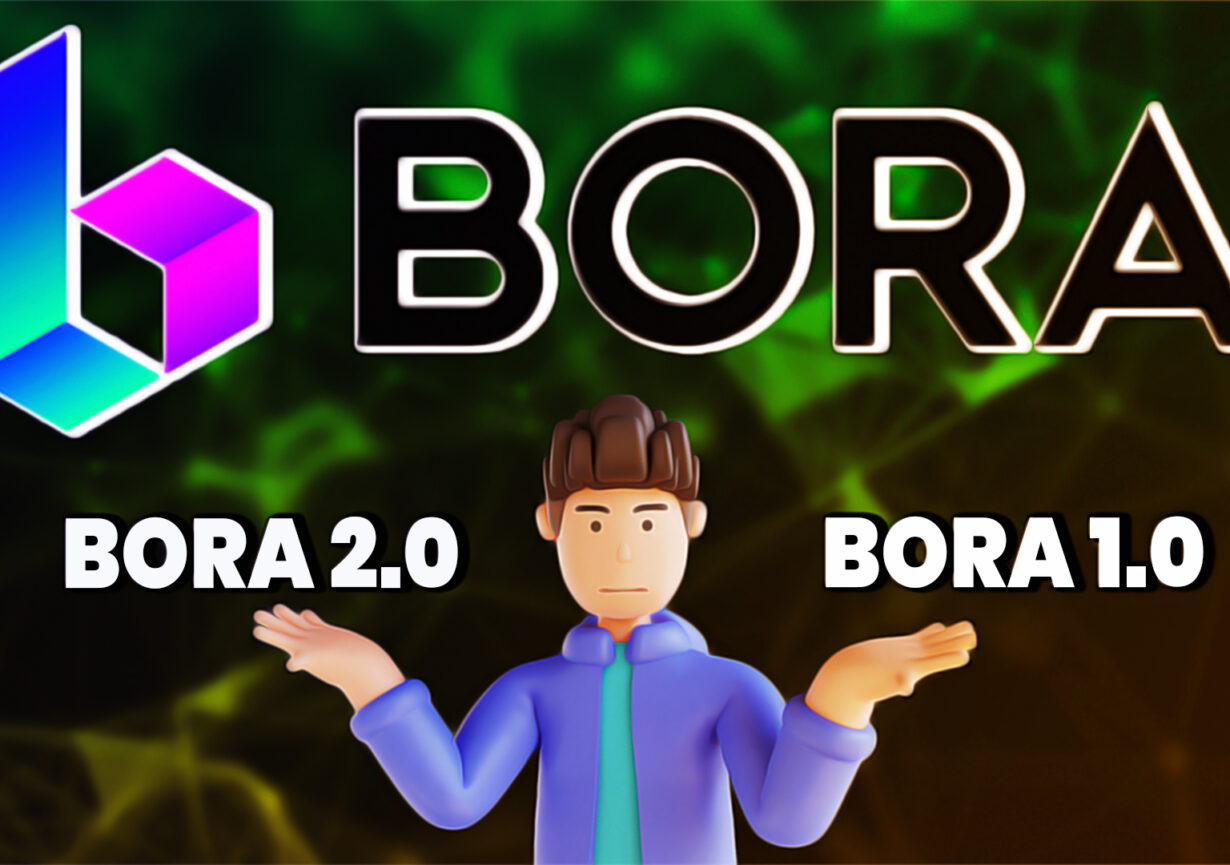- BORA is a Blockchain-based Content Delivery Network (BCDN).
- BORA 2.0 will adopt Klaytn as its mainnet chain instead of Ethereum.
- The new platform will utilize the PBFT consensus mechanism instead of PoA.
Blockchain technology first found its commercial application in the finance sector. Bitcoin, which became the face of blockchain, revolutionized the finance sector. Since then, several individuals have explored other domains where this technology could be used, with gaming and NFTs being some examples.
BORA was launched as a decentralized platform for providing content and entertainment. The layer2 project helps in distributing dAPPs, games, music, movies, and other content to the users. BORA aims to bring people into DeFi through entertainment.
The Need For Bora, Existing Problems
- Accurate, Secure, and Transparent Information
In the entertainment industry credibility has always been an issue. The user cannot verify that the information provided by the creators could be trusted. Even if the provider provides proof, it is difficult for users to trust at face value. For example, how can users believe that the poker game randomly shuffles the cards at each new game? They can only trust the face value of the Company.
Similarly, there is a lack of transparency among users and content providers. The information is stored in private databases and the provider may choose among the data to be shared and hidden. Moreover, the data could be hacked or tampered with, leading to financial losses for poker players.
- User’s Assets Value
While playing online games, users are incentivized with in-game purchases or features like Gold level or Pt status level, and so on. Users put in much time, effort, and money and gradually become attached to the game. However, these digital assets are connected to the provider’s database and will disappear once the services are suspended. The Pt status level and 100,000 strong armies earned will all be lost instantly. Gamers understand the dependence on these assets and may lose interest or reduce their participation.
Gaming industries know all these flaws and may want to improve the user experience. With the success of the games launched on the blockchain network, new content providers may enter this domain. However, due to the technical know-how and high volatility of cryptocurrencies, the newcomers may feel at risk. The party may fear abandoning its existing centralized, million-user market to a decentralized yet relatively small and maturing market.
BORA Chain
BORA provides each content provider with a separate and independent blockchain that links to the Ethereum public chain. BORA chain ensures scalability, speed, and flexibility while Ethereum provides exposure to its wide community and integration possibility with its dApps and projects soon.

Image 1 shows the interlinking of layer 2 Bora chain and the Ethereum public chain
BORA Tokenomics
- BORA Points are the tokens exclusively for the private BORA chain. They are circulated on the platform and can be used for generating smart contracts. The content providers may use them in BORA-Play, to incentivize players, BORA-Community, for community financing, or in BORA-Tickets, for events and concerts.
- BORA Tokens follow Ethereum’s ERC-20 standard. This BORA token can be exchanged in renowned DEX platforms for other well-known crypto tokens. BORA points can also be exchanged for the corresponding BORA tokens.

BORA 2.0
Limitations of BORA 1.0
BORA 1.0 was designed as a private chain and exercised 100% governance there, thus the consensus of Proof Of Authority (PoA). However, this closed nature became an obstacle for it to launch emerging blockchain features like DeFi, NFT, GameFi, Wallets, and DEX. The users also could not trust the transparency due to complete control by the network. The network also reconsidered their pre-minted and sub-token structure, if they want to expand their ecosystem.
Features of BORA 2.0
BORA 2.0 is transitioning to the Klaytn network for its public network. It will enable BORA to launch more eco-products and allocate resources to developing the BORA API Service (BAS).
BORA has adopted the Byzantine Fault Tolerance as its consensus mechanism which overcomes the drawbacks of PoW, PoA, and PoS consensus mechanisms. Klaytn, the mainnet chain, also runs on PBFT, further easing their collaboration.
BORA will change its node operation method to Governing Councils.
Final Thoughts
BORA was initially launched as a private blockchain service provider linked to Ethereum to provide a seamless platform for content providers to launch their services. The BORA 1.0, however, had some challenges which BORA 2.0 promised to solve. By shifting to the Klaytn network, BORO aims to develop an environment that enables the easy exchange of assets and services.


Leave a Reply